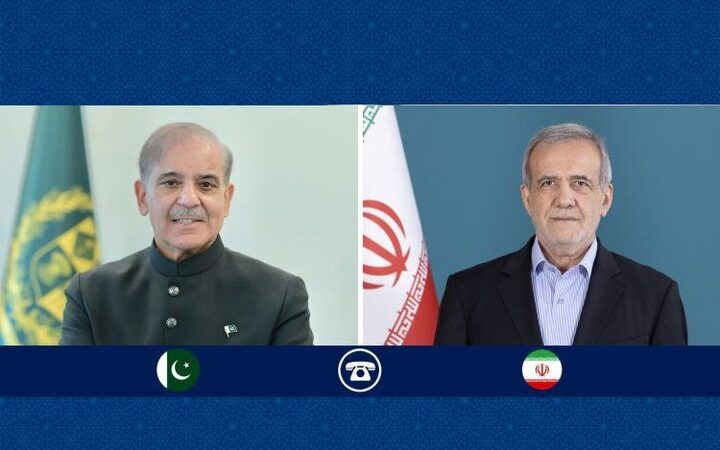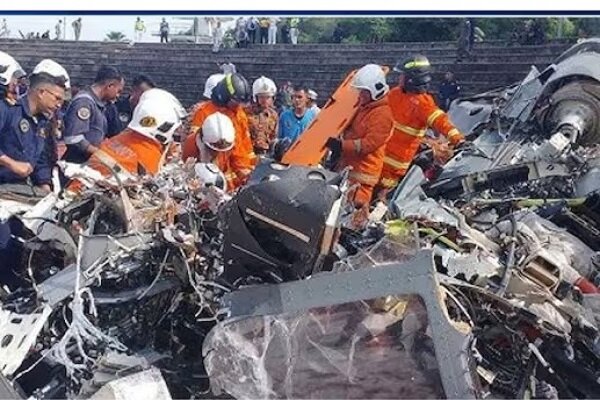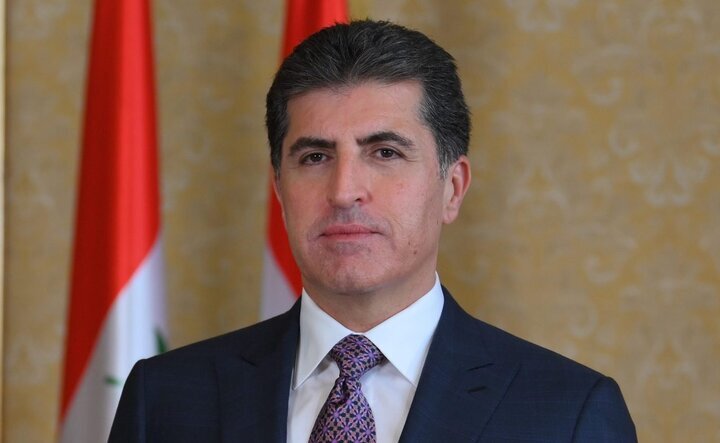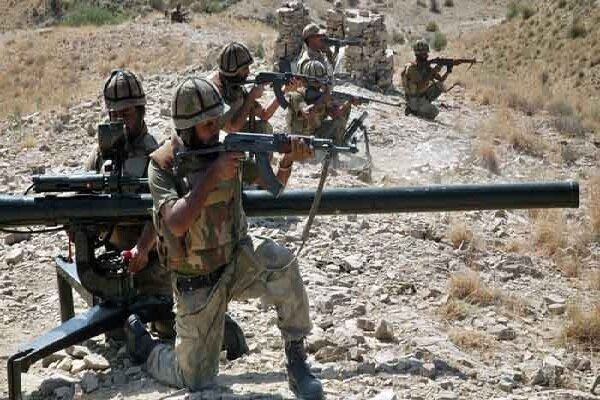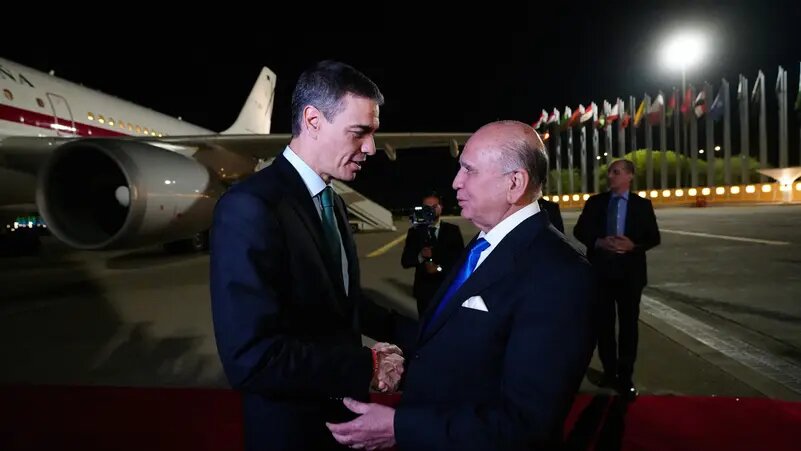Debunked: MKO terror cult's latest disinformation blitz against Iran amid nuclear talks

By Ivan Kesic
The claims about alleged Iranian “secret military nuclear facilities” have again been circulating recently – amid the Iran-US indirect nuclear talks – courtesy of an army of bots sitting in Albania.
On May 8, the anti-Iranian terrorist cult Mujahedin-e-Khalq Organization (MKO) – also known by its euphemistic alias, the National Council of Resistance of Iran (NCRI) – released a report claiming that Iran operates “secret facilities linked to a nuclear weapons program.”
That same day, Fox News reported on the claim without any editorial scrutiny or fact-check, which was followed by a chorus of anti-Iran rhetoric by American, Israeli, and MKO media outlets and commentators regurgitating the narrative.
Iran’s mission to the United Nations, as well as Foreign Minister Abbas Araghchi, dismissed the Fox News report as fabricated and part of a coordinated attempt by the Israeli regime to derail ongoing indirect nuclear talks between Tehran and Washington.
“This fabricated report follows the usual pattern of the NCRI terrorist group, which produces fake reports in the form of so-called intelligence and delivers them to Western services, including in the United States,” the Iranian mission said in a statement.
“Like clockwork, more ‘Very Scary Satellite Images’ are being circulated just as Iran–US nuclear talks are set to resume,” Araghchi noted sarcastically.
Claims and fabrications
In its latest pack of allegations concerning Iran’s civilian nuclear program, the MKO terror cult headquartered in Albania identified four locations in central Semnan province, along with an additional site – Tehran Parchin facility – claiming they are linked to nuclear weapons development.
However, the Parchin site has long been under the supervision of the International Atomic Energy Agency (IAEA), which has found no evidence suggesting any military dimension to Iran’s peaceful nuclear activities there, directly contradicting the MKO’s claims.
Two of the sites named, located near the cities of Semnan and Shahrud, have been proven to be rocket and space launch facilities. These bases have been publicly recognized since 2008, following Iran’s initial satellite launches, and have no connection to the nuclear program.
Among the MKO’s more theatrical “discoveries” is a facility they refer to as the “Rainbow Site,” allegedly a nuclear weapons production center.
The facts, however, scoff at their claims. The site is called Diba Energy Sina industrial plant, which has been operating for over 12 years without attracting scrutiny from the IAEA.
Another highlighted site – a radar station near Garmsar – was similarly misrepresented.
A deeper analysis debunks all of the MKO’s flimsy claims, revealing them to be arbitrary, amateur interpretations of publicly available satellite imagery.
According to experts, a fundamental aspect of planning any nuclear facility, particularly in a country like Iran with high seismic activity, is evaluating the site’s vulnerability to earthquakes.
Constructing such a facility in a high-risk earthquake zone could result in catastrophic environmental and human consequences, especially if located near densely populated areas.
Yet, the so-called Rainbow Site – purported to be a secret nuclear facility – is situated precisely in such a seismically sensitive location, just 50 kilometers from Greater Tehran, home to over 15 million people. Even more illogically, it is built above ground rather than underground.
The site lies at the convergence of three major fault lines: Garmsar, Eyvanakey, and Sorkheh, and is only 30 kilometers from the highly dangerous Mosha fault.
On Map A, the location is marked with a white and green circle at the southern edge of the Alborz mountain range, annotated with “743 AD” – referencing a devastating 7.2-magnitude earthquake that struck the region in that year.
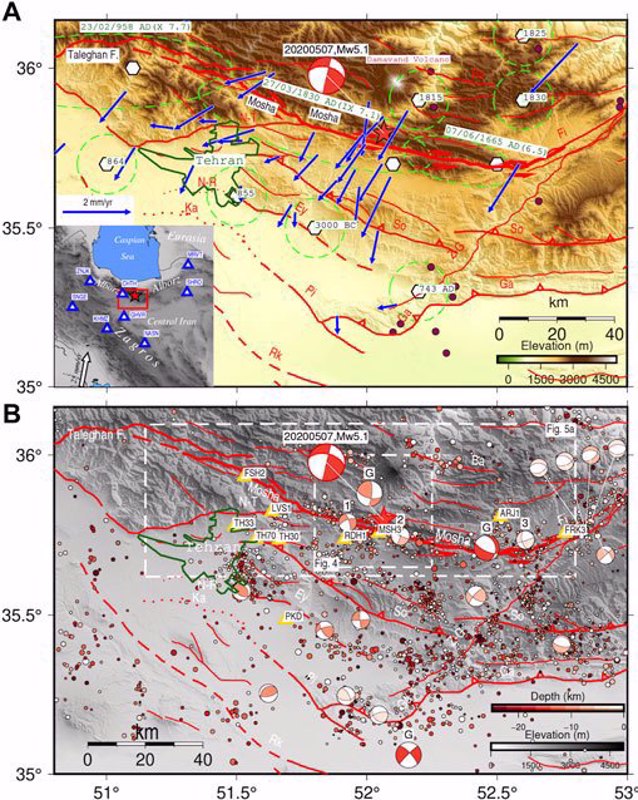
Seismic reality and industrial misrepresentation
Geological studies confirm that significant earthquakes along the Garmsar fault have been recorded in recent history, notably in 1945 and 1982. Map B, from the same scientific source, clearly identifies the area as one of the most seismically active zones in the region.
Coincidentally, earthquakes in Semnan were recorded between May 7 and 9 – precisely when the MKO released its disinformation campaign. This timing once again provided anti-Iranian propaganda outlets with an opportunity to speculate about supposed “nuclear tests.”
Experts swiftly dismissed these claims as charlatan nonsense, noting that the quake epicenters were located 8 to 12 kilometers underground, far deeper than any drilling operation ever conducted by humans.
The MKO cult also cited the site’s relative isolation at the base of a mountain, its single access road, and a fenced perimeter as supposed indicators of “top-secret” military activity.
In reality, the facility is enclosed by a basic fence without watchtowers or any other security infrastructure typically associated with high-security military installations.
The actual reason for the facility’s location lies in its function: it is operated by Diba Energy Sina, which produces around 5,000 tons per year of ethylamine – an organic compound with no relevance to nuclear technology.
Ethylamine (C₂H₅NH₂) is highly flammable, toxic, and corrosive, necessitating strict safety protocols in its industrial production. It can form dangerously explosive mixtures with air, and due to the scale of production, an industrial accident could be comparable to the recent chemical incident in the southern city of Bandar Abbas.
Standard safety measures at ethylamine facilities include enclosed systems, industrial ventilation, sealed reactors, and nitrogen inerting to minimize exposure to air.
The compound is stored in cool (below 20°C), well-ventilated areas to reduce vapor pressure and the risk of ignition.
These safety requirements explain the site’s isolated location. Satellite imagery of the western facility, still under construction, clearly reveals industrial features such as large rooftop ventilation fans, nitrogen inerting pipelines, and chemical storage tanks, all typical of a standard ethylamine production plant.
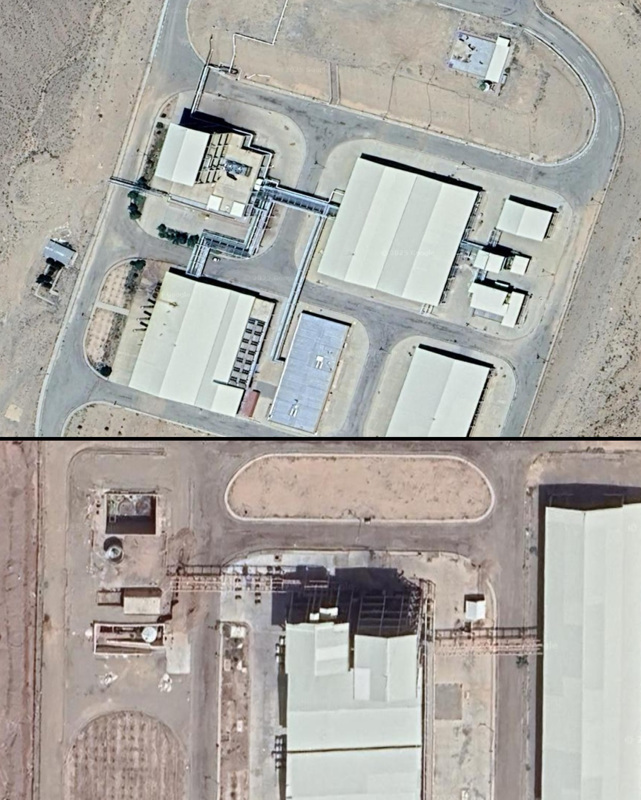
MKO’s baseless claims and misrepresentations
Information about the Diba Energy Sina Company is publicly available online. However, the MKO portrays its discovery as the result of so-called “comprehensive intelligence work” and bizarrely insists the company is merely a front for a clandestine nuclear weapons program.
These baseless accusations were echoed by several propagandists from anti-Iranian outlets, who cited outdated remarks from Dr. Gholamreza Kateb, then-MP for Garmsar and Aradan Counties in Iran’s Islamic Consultative Assembly.
In 2013, Kateb publicly stated that part of the Garmsar industrial zone had been allocated to the Ministry of Defense, along with an additional section granted to Diba Energy Sina.
These comments were widely reported by Iranian media at the time, further proving that these are not secretive or classified facilities.
Kateb also mentioned that the move would generate local employment, an unlikely outcome if the area were truly dedicated to a top-secret nuclear project, since such programs do not typically employ local civilian workers.
Another dubious MKO claim is that the so-called “Rainbow Site” is closely linked to the Qadir radar station, located 28 kilometers southeast, supposedly “proving” the site’s strategic military importance.
In reality, static radar stations of this kind are neither rare nor secret. There are at least eight such installations across Iran, each characterized by a tall metal mast and four large, perpendicular phased-array panels.
The Qadir radar station in question, located south of Garmsar, was the first of its kind and became operational in 2014. Its unveiling, complete with technical details and photographs, was widely covered by Iranian media.
Qadir is an over-the-horizon (OTH) radar system, designed for long-range early warning, capable of detecting threats at distances up to 1,100 kilometers. Operating in HF, VHF, and UHF frequency bands, it offers broad coverage but lower resolution compared to shorter-wavelength radars.
Due to its design and purpose, the Qadir system would offer little defensive utility against direct or short-range attacks on nearby industrial facilities like the Diba Energy Sina plant. In such cases, localized air defense systems are the standard method of protection – if deemed necessary at all.
Unsurprisingly, this technical reality is lost on MKO members, who have no expertise in nuclear science or radar systems. Their background lies primarily in the use of small arms and improvised explosives – tools of terrorism rather than analysis.
Other MKO bogus claims, repeated by many Western and Arab media outlets, such as the supposed involvement of martyred nuclear scientists Dr. Mohsen Fakhrizadeh, lack any supporting evidence.
In the context of the group’s other thoroughly debunked claims, these too appear to be fabricated and politically motivated.
Repeated MKO and Israeli practices
The motives behind the latest disinformation campaign, timed amid the indirect Iran-US nuclear talks, are rooted in an undisguised desire to sabotage diplomacy and provoke military action against the Islamic Republic of Iran, something that Iran has strongly warned against.
This position is shared by both the MKO terrorists and their backers in the Israeli regime.
Historically, both the MKO and Israel have been notorious for spreading similar false accusations against Iran with the same intent.
A notable example occurred in 1995, when the MKO cult falsely claimed that a secret nuclear weapons development facility existed near the coastal Caspian city of Chalus. According to the MKO, experts from the former Soviet Union, China, and North Korea were working alongside Iranian officials at the site at the time.
In their characteristic style of anti-Iranian disinformation, the MKO cult, which is sponsored by both the US and Israel, cited alleged “informants on the ground,” attempting to create the false impression that they possessed extensive intelligence capabilities and support within Iran.
Although many Western media outlets uncritically reported these claims, investigations soon revealed them to be entirely fabricated. The IAEA, after inspecting various disputed Iranian sites, found no evidence of any nuclear facility near Chalus.
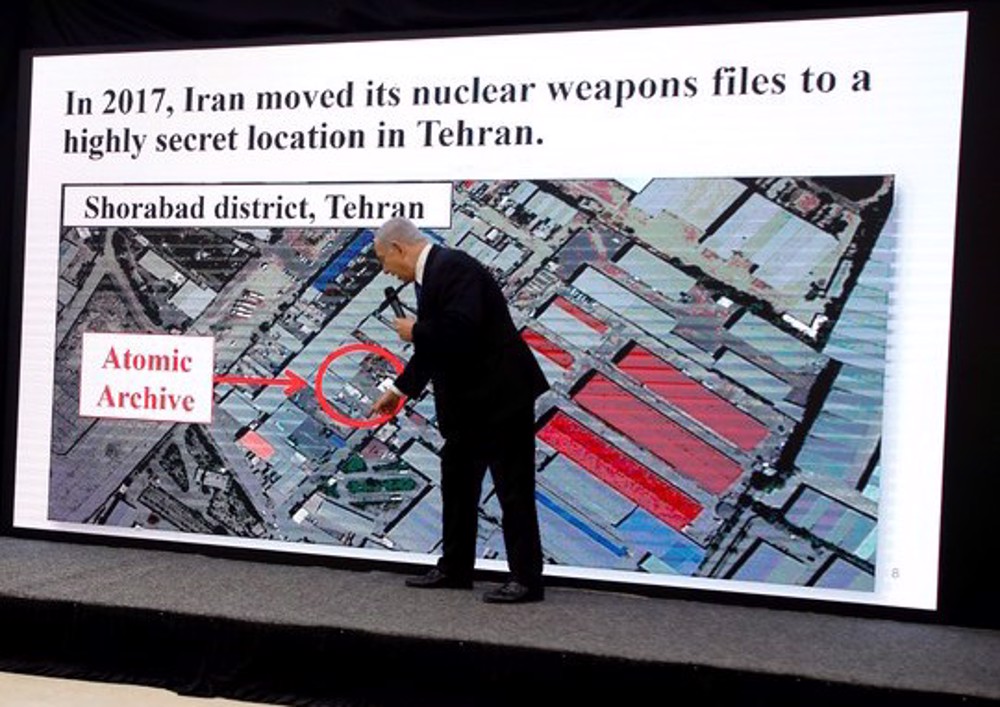
A more notable Case: Netanyahu’s fabrications
A more widely recognized example of similar fabrications comes from Israeli Prime Minister Benjamin Netanyahu, who, in March 2018, delivered a PowerPoint presentation showcasing what he called “secret nuclear documents” purportedly stolen by Israeli agents from Iran.
According to Netanyahu’s fabricated narrative, after signing the 2015 nuclear agreement, Iran supposedly “stepped up efforts to hide classified nuclear files,” storing them in a top-secret location in Tehran. In his presentation, this site was depicted as a building in the Shorabad District, located in the southern part of the capital.
A closer examination of the supposed “super-secret” site using satellite imagery revealed that it was, in fact, a typical warehouse surrounded by a tin can factory, a carpet shop, a restaurant, a mosque, a bookstore, and a commercial warehouse for books and electronics, all in close proximity to one another.
The entire area was evidently civilian and open to the public from several sides. There were no fences, checkpoints, or observation posts – standard features of highly sensitive military locations across Iran.
Just a few meters south of the supposed site was the “Shahab” club, sharing its name with a well-known Iranian ballistic missile. Critics have speculated that Netanyahu’s PR agents were misled into thinking this was a military site, though it was, in reality, an equestrian club.
Ironically, Netanyahu had previously claimed that Iran’s uranium enrichment facilities were buried deep in the mountains to “conceal the military nature” of the program.
Yet, this new narrative contradicted that claim by suggesting that sensitive nuclear documents were stored in a makeshift garage-like facility.
Moreover, the interior dimensions shown in Netanyahu’s slides (5 to 6 meters wide) did not match the satellite images and photographs, which revealed a hall measuring between 12 and 15 meters wide.
Other blatantly false claims included the allegation that half a ton of documents had been stolen, an amount larger than the development files for the US Apollo space program, and childish drawings of supposed Iranian nuclear warheads, which were identical to those found on popular websites detailing the history of nuclear weapons.
Despite the ridicule Netanyahu’s presentation received from experts and the IAEA dismissing it as frivolous, Trump and other top American officials treated it as “evidence” of Iran’s suspicious nuclear intentions.
Two months later, Trump announced the US withdrawal from the Joint Comprehensive Plan of Action (JCPOA), marking the beginning of the strained bilateral relations between the two countries that persist to this day.


